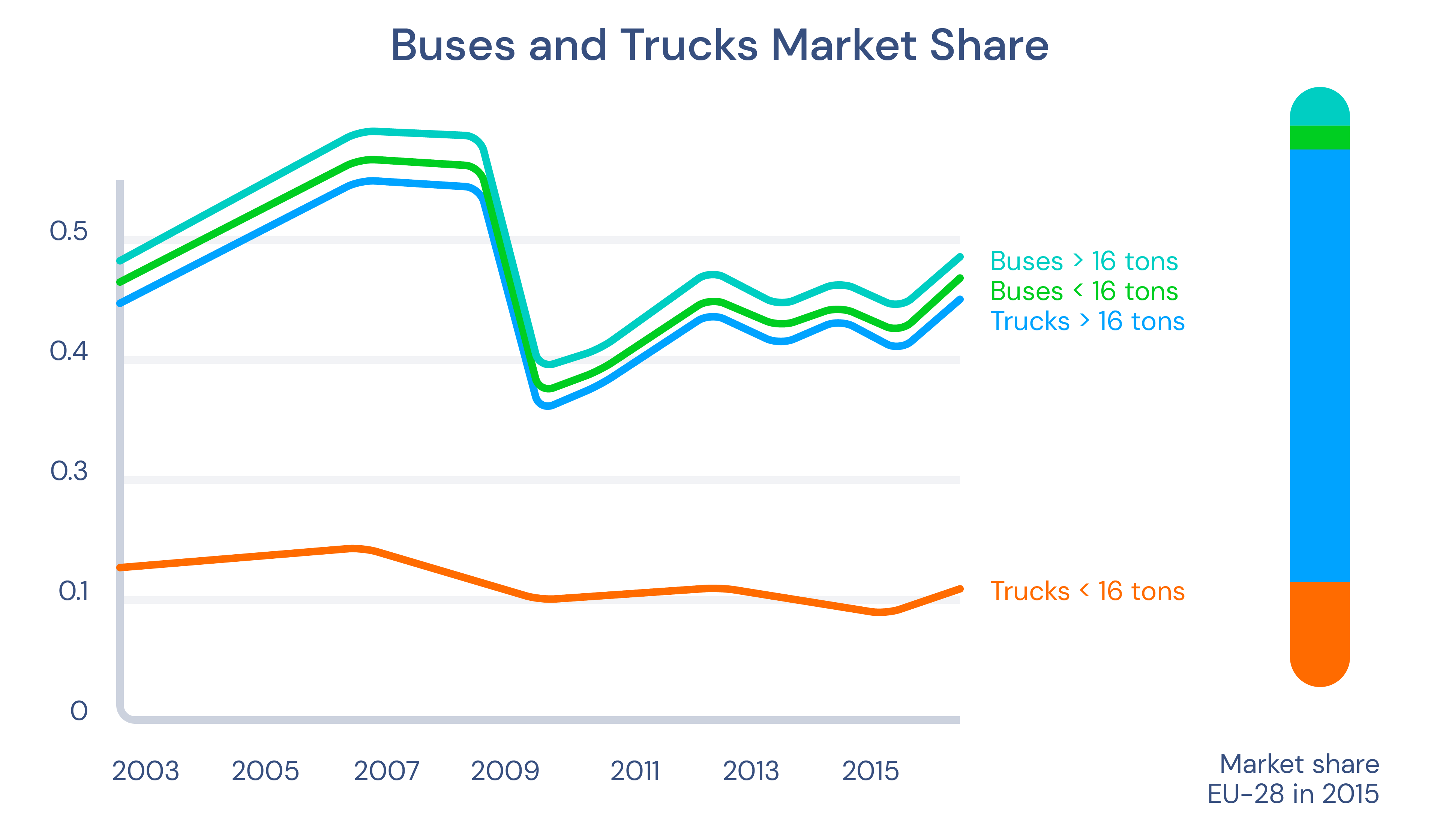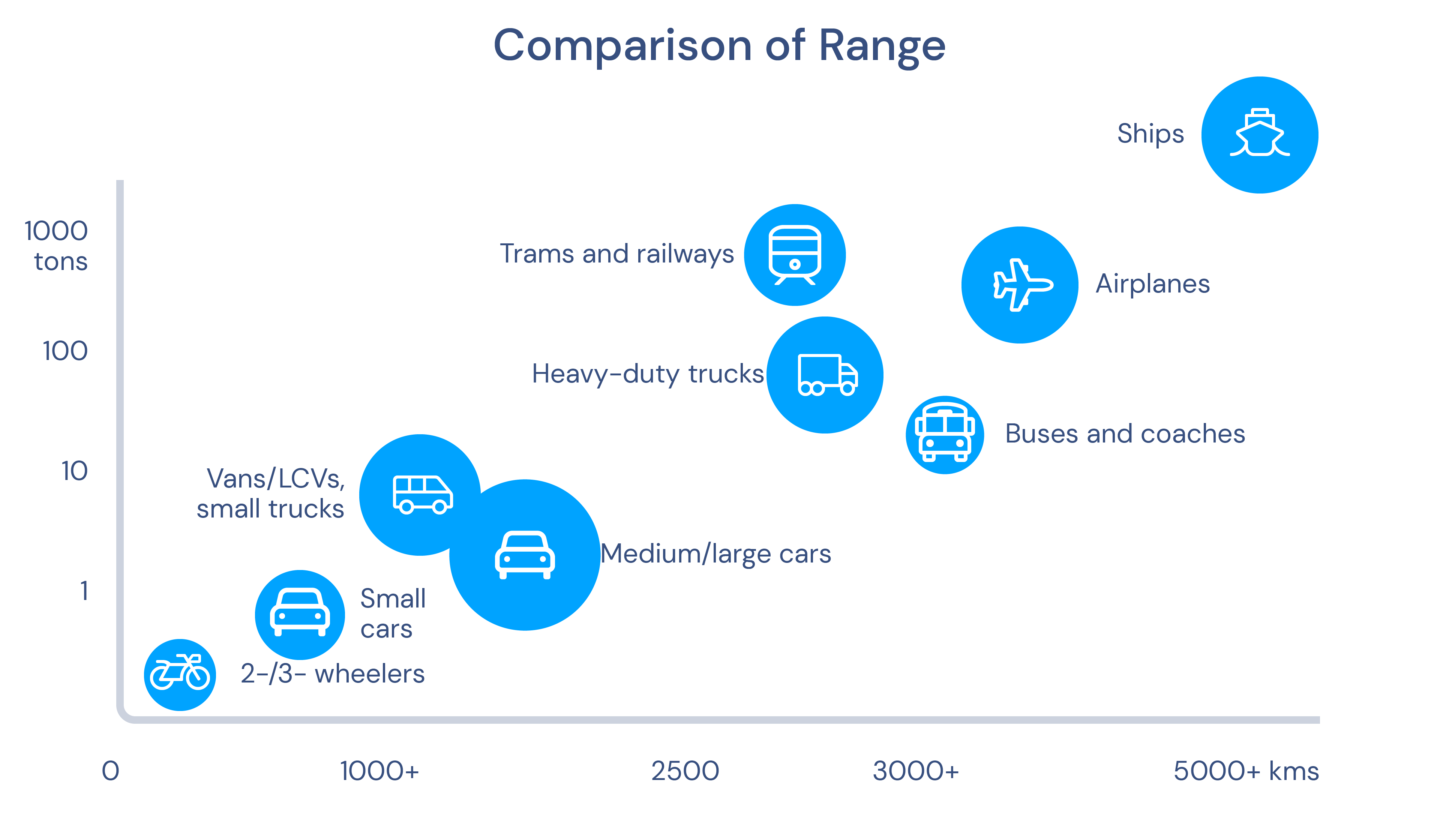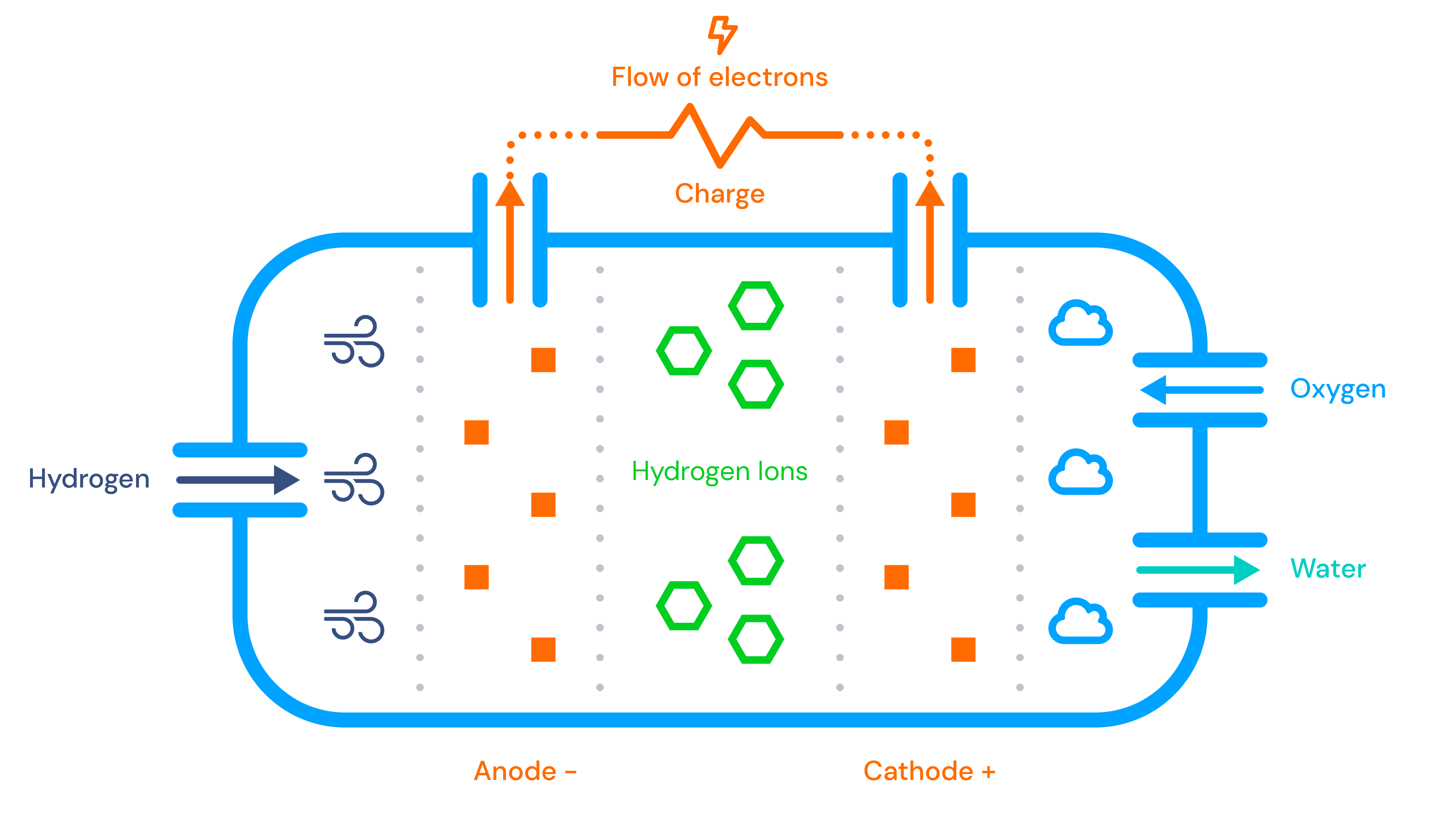An Overview Of Fuel Cell Trucks
Why fuel cell trucks are a solution to decarbonise the growing freight transport
An overview of the truck market in Europe
Source: ACEA

HDVs are due to be an important market for hydrogen technology as suggested in the schematic below:

Source: Hydrogen Council study, 2017

A hydrogen atom includes positive ions and negative electrons. Oxygen (O2) is pumped in through the cathode, attracting the hydrogen atoms (H2) which are introduced at the anode. To get to the oxygen, the hydrogen atoms have to cross an electrolyte or membrane that blocks their electrons. These electrons are forced into another circuit that produces electricity. The ions (H+) on the other hand, flow through the electrolyte to reach the oxygen atoms which they bond with to form water (H2O). This process produces heat, which can also be used as a source of energy. Current research is focused on perfecting the membranes.
Source: AirLiquide